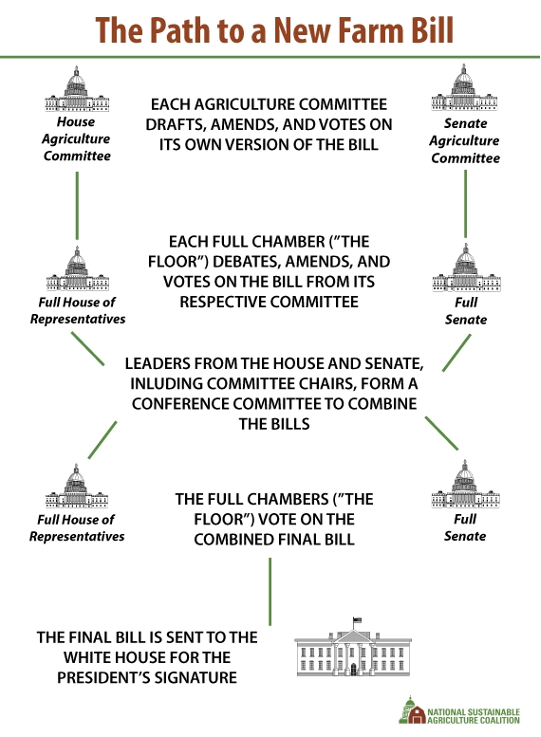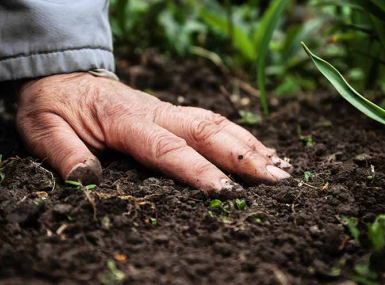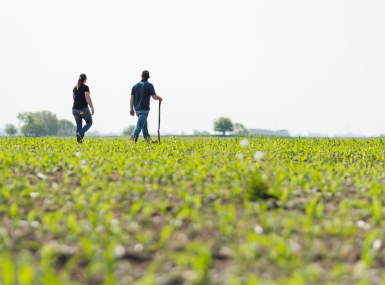Primer for Counties: 2025 Farm Bill Reauthorization

Upcoming Events
Related News
Why The Farm Bill Matters to Counties
The U.S. Farm Bill helps counties make critical investments in infrastructure, economic development, workforce training, nutrition and conservation within some of our nation’s most underserved communities. Preserving the law’s programs is key to the strength and stability of our local, regional, state and national economies.
Counties support a long-term reauthorization of the Farm Bill to help counties provide critical investments in our nation’s most underserved communities. For the 70 percent of America’s counties, parishes and boroughs considered rural, these titles represent significant opportunities to address acute issues unique to Rural America.
In Urban America, the Farm Bill plays a key role in ensuring low-income individuals have access to nutrition. The Supplemental Nutrition Assistance Program (SNAP), formerly known as food stamps, is the largest federal nutrition program, providing 41.5 million low-income individuals with monthly grocery benefits. SNAP is administered in partnership with states, ten of which delegate that responsibility to counties: California, Colorado, Minnesota, New Jersey, New York, North Carolina, North Dakota, Ohio, Virginia and Wisconsin. These county-administered states account for 31 percent of all SNAP program participants. Counties operating SNAP often contribute significant levels of local funds to meet the administrative and supplemental costs of running the program.
Overall, the Farm Bill’s twelve titles help strengthen local infrastructure, support rural economic development initiatives, protect our nation’s food supply, increase access to healthy food for low-income populations, and promote environmental stewardship and conservation.
For more information, view NACo’s policy brief on county priorities in the 2025 Farm Bill.
Background
Last authorized for five years in 2018 as the Agriculture Improvement Act of 2018 (P.L. 115-334), the 2018 Farm Bill was a major piece of bipartisan legislation that authorized $428.3 billion over five years for a broad range of USDA programs important to counties.
Through loans and loan guarantees, federal formulas and direct competitive grant programs, the law contains programs that assist counties and county residents in rural development efforts, nutrition assistance programs, conservation initiatives, renewable energy deployment, support for new farmers and ranchers, and business development initiatives.
According to the USDA Economic Research Service, roughly 75 percent of funding went toward mandatory nutrition programs such as the Supplemental Nutrition Assistance Program (SNAP), with the remainder largely made up by the Commodities and Conservation titles as shown in the figure below.
In the 2018 Farm Bill, NACo was successful in advocating for several provisions, including:
- Securing the permanent reinstatement of the Undersecretary of Rural Development for the USDA, who oversees the over $200 billion USDA Rural Development portfolio
- Establishing the Rural Innovation Stronger Economy Grant Program, which helps counties strengthen the local economy through partnerships with the private sector and institutions of higher education
- Including $350 million for the deployment of rural broadband through initiatives such as the ReConnect Program, the Community Connect Program, and the Telecommunications Infrastructure Loan and Loan Guarantee Program
As Congress works to draft a new, five-year Farm Bill, NACo will continue to work with our federal partners to ensure a new, long-term Farm Bill reauthorization that includes key county priorities is signed into law in 2025.
Projected outlays under the 2018 Farm Bill, 2019–23
Source: USDA, Economic Research Service based on Congressional Budget Office, Direct Spending Effects for the Agriculture Improvement Act of 2018, December 11, 2018.
County Priorities for the 2025 Farm Bill
As a key intergovernmental partner, counties welcome the opportunity to work with our federal partners toward the passage of a bipartisan, comprehensive and long-term Farm Bill that achieves our shared priorities of invigorating rural communities, providing access to affordable and healthy foods and supporting farmers and ranchers that stimulate our economy and feed our nation.
Therefore, counties support the following priorities for the 2025 Farm Bill:
- Improve ease of access and flexibility of Farm Bill programs: Cumbersome regulations and statutory requirements restrict rural communities from accessing the resources they desperately need to thrive. Counties support legislative action to streamline application processes and reporting requirements for Farm Bill programs such as the ReConnect Program and the Rural Innovation Stronger Economy (RISE) Grant Program. Counties also support efforts to add additional flexibility for federal match requirements that force rural communities to secure additional funding before unlocking much-needed resources.
- Provide stronger support for small and mid-size producers: According to the USDA, small farm operations make up almost 90 percent of the nation's farms. Despite the vital role these producers play in their communities and local, state, and national economies, small farmers often struggle to access affordable sources of financing they need. An increasing number of these operations rely on off-farm sources of income to make ends meet. This trend has corresponded with a troubling decline in family farms. Counties support enhancements to resources, such as the Farming Opportunities Training and Outreach (FOTO) program, that support beginning, small, and mid-size producers.
- Advance comprehensive farm labor reform: Half of the nation’s hired farmworkers, roughly 1.2 million individuals, lack legal immigration status. Farmers and ranchers – both in rural and urban counties – depend on these workers, who are vital to the economic health of the United States agriculture sector. Counties support similar legislative actions to those under the Farm Workforce Modernization Act, which would reform the H2-A program and provide more flexibility for employers while ensuring critical protections for workers.
- Maintain and expand Farm Bill conservation programs: Protecting our nation's most sensitive ecosystems starts with the voluntary conservation efforts of American farmers, ranchers and foresters. Programs such as the Environmental Quality Incentive Program (EQIP), Conservation Reserve Program (CRP), Wetlands Reserve Program (WRP), and Conservation Security Program (CSP) provide valuable resources and expertise to support ongoing conservation initiatives. These programs, coupled with a strong local relationship with USDA's Natural Resource Conservation Service (NRCS), give local communities the support they need to take the lead in conservation efforts. Counties support maintaining or increasing funding levels for Farm Bill conservation programs that empower farmers and ranchers to voluntarily engage in conservation projects that serve the needs of their communities.
- Bridge the digital divide: Access to high-speed internet connectivity is critical to rural America's economic and social vitality. According to the Federal Communications Commission (FCC), approximately 14.5 million Americans lack access to broadband speeds of at least 25 Mbps download and 3 Mbps upload, with 11 million of these Americans residing in rural areas. Universal deployment of high-speed internet to rural counties would bring major benefits, including improved health care services through telemedicine services, increased ability for remote education and closing of the homework gap, and the promotion of quality economic development through the ability to support remote work opportunities. Counties support utilizing the Farm Bill as a mechanism to provide long-term funding support, including digital literacy, for the universal deployment and adoption of high-speed broadband services in rural America that will help build resilient and future-ready communities in the 21st century.
- Expand opportunities for rural entrepreneurs: The Farm Bill authorizes several important programs to catalyze rural communities' economic development and business creation. Counties support the maintenance or expansion of USDA Rural Business programs, including the Rural Economic Development Program and the Rural Innovation Stronger Economy (RISE) Program, that have empowered rural entrepreneurs across the country. Continued investment in these programs in the 2025 Farm Bill is crucial to securing new economic opportunities for rural communities.
- Invest in the capacity of rural counties: Rural counties and the communities we serve often lack the resources and expertise needed to access federal support. By investing in rural capacity building, Congress can ensure rural counties have access to the same community development resources already available to larger municipalities while being tailored to meet the specific needs of rural America. Counties support efforts to secure additional funding for rural capacity building in the Rural Development title of the 2025 Farm Bill. Robust investment in the expertise and capacity of rural counties will empower rural policymakers to plan and execute locally-led community economic development strategies.
- Close the wastewater access gap: The critical water and wastewater infrastructure deployment remains a priority for many rural communities. According to the Environmental Protection Agency, more than two million Americans lack access to basic running water. Despite this need, the cost of building, maintaining, and upgrading local water systems is a challenge for many small towns and rural counties. Beyond public health interests, clean and reliable water is a necessity to spur economic growth. Counties call on Congress to address rural Americans' water and wastewater infrastructure needs by increasing funding for USDA RD's Water and Environmental Programs (WEP) in the 2025 Farm Bill.
- Maintain SNAP funding levels, structure and eligibility: The Supplemental Nutrition Assistance Program (SNAP) provides nearly 40 million low-income individuals with monthly grocery benefits, functioning as a key support for vulnerable county residents. Counties support maintaining the current SNAP program and funding structure, including the 50 percent federal administrative match. Counties also support efforts to streamline SNAP to reduce burdens on administrators and recipients and create greater flexibility in SNAP work requirements. Additionally, counties call on Congress to ensure equitable and adequate benefits, improve healthy food access and develop solutions for rural SNAP recipients by addressing the specific obstacles that rural communities face.
- Elevate the county role in federal land management: County governments are a leading voice in the intergovernmental partnership with federal lands management agencies. The Forestry Title of the 2025 Farm Bill poses opportunities to build on the partnership between counties and federal land management agencies. Counties support efforts to expand federal land management authorities to allow more robust conservation and stewardship agreements with county governments. Counties also call for receipt sharing for Stewardship End Result Contracting and Good Neighbor Authority (GNA), allowing counties to reinvest revenue into other GNA forest management projects on non-federal lands, as states and tribes can do. In turn, counties support reauthorizing the Landscape-Scale Restoration (LSR) program.
The legislative process used to develop and enact new Farm Bills every five years is:
Committee Action
To begin the process of drafting a new Farm Bill, the U.S. House and Senate Agriculture Committees hold a series of public hearings, both in Washington, D.C. and across the country where public and private stakeholders share perspectives and offer recommendations on Farm Bill programs. Following the conclusion of preliminary hearings, the respective agriculture committees negotiate, draft and pass through committee what are traditionally different versions of an authorization of USDA programs.
Sending the Bill to the Floor
After the House and Senate versions of the Farm Bill are passed through committee, each chamber’s Farm Bill is then debated on the floor and put to a vote.
Conference Committee
After both bills pass through their respective chambers of Congress, House and Senate leadership assign Members of Congress to a “conference committee” to reconcile the differences between the House and Senate bills into a consolidated legislative package.
Back to the Floor
After successfully reconciling a unified version of the Farm Bill, the conference committee returns the bill for consideration in the House and the Senate.
To the White House
After achieving final passage in Congress, the Farm Bill is sent to the President’s desk. The President can veto the bill, or more commonly, sign it into law.
Legislative Outlook
With Congress already moving to develop a new bipartisan Farm Bill package, a five-year reauthorization of the law appears likely upon its expiration at the end of FY 2025, though not without obstacles.
The Farm Bill contains significant amounts of mandatory nutrition funding, which has historically been a sticking point between Democrats and Republicans. In a divided 118th Congress, this will continue to complicate negotiations. Lawmakers will also face a unique challenge in formulating title funding levels due to the billons for Farm Bill programs included in the Inflation Reduction Act (IRA/P.L. 117-169).
The IRA provided nearly $40 billion for agriculture, forestry and rural development programs traditionally authorized by the Farm Bill and funded through the regular appropriations processes. Conservation and environmental programs, new technical assistance resources, and energy and drought initiatives received significant funding through the IRA.
Notably, the IRA invests over nine times the amount of conservation funding included in the 2018 Farm Bill for the four working land programs: Conservation Stewardship Program, Environmental Quality Incentives Program, Regional Conservation Partnership Program and Agricultural Conservation Easement Program. The IRA also extends the authorizations for these programs through 2031.
Should the U.S. Congress fail to reach a new reauthorization by September 30, 2024, the 2018 Farm Bill must be extended to prevent reverting back to dairy support pricing included in the 1949 Farm Bill, which would essentially double the retail price consumers are currently paying for dairy products and other commodities.
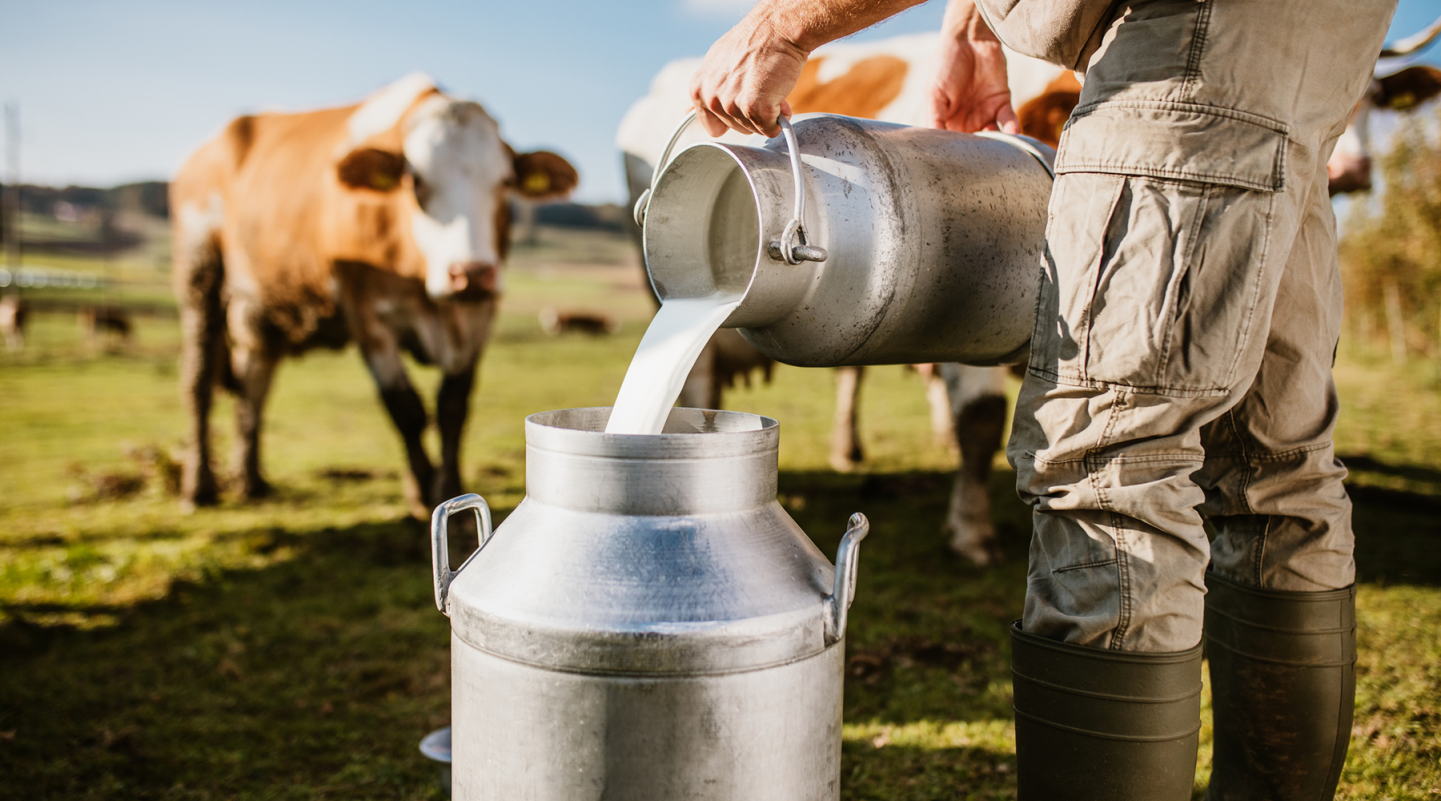
Title I: Commodity Programs
Five-Year Funding Level: $31.44 billion
The Commodity title provides farm payments when crop prices or revenues decline for major commodity crops and also includes programs to help manage production losses due to natural disasters through programs that provide cash assistance to livestock producers who face losses due to natural disasters or periods of economic downturn
Programs of Interest
Agricultural Risk Coverage (ARC) and Price Loss Coverage (PLC) Programs provide financial support for losses in income accrued by producers of certain eligible commodities.
Programs important to counties and our residents include:
HOW TO ACCESS: Eligible producers can apply for formula funding through ARC/PLC programs by working directly with the USDA-FSA staff local USDA Service Centers. Producers also have the option to apply through FSA’s online portal. |
- ARC-County (ARC-CO): Provides payments based on county revenues that are issued when the actual county crop revenue of a covered commodity is less than the ARC-CO guarantee for the covered commodity
- ARC-Individual Coverage (ARC-IC): Provides payments based on individual farm revenue when actual individual crop revenues for all covered commodities planted on an eligible farm is less than the ARC-IC guarantee for those covered commodities
- PLC: Provides payments based on market year averages when market prices for a covered commodity drop below a set reference price established in the Farm Bill
Disaster Assistance of Livestock Producers Programs help manage production losses due to natural disasters through a series of programs that provide cash assistance to livestock producers who face losses due to events, such as drought, fire or flooding.
Programs important to counties and our residents include:
HOW TO ACCESS: Eligible producers should work with FSA staff at the appropriate local USDA service center to provide required documentation and apply for benefits. |
- Livestock Indemnity Program: Provides benefits to livestock producers for livestock deaths in excess of normal mortality caused by adverse weather or by attacks by animals reintroduced into the wild by the federal government
- Livestock Forage Disaster Program: Compensates eligible livestock producers who have suffered grazing losses for covered livestock on native land, improved pastureland with permanent vegetation, areas planted specifically for grazing and federally managed land where grazing is p prohibited
- Emergency Assistance for Livestock, Honeybees, and Farm-Raised Fish Program (ELAP): Provides financial assistance to producers for losses due to disease, adverse weather events including droughts, blizzards and wildfire, and transporting feed for livestock requiring grazing in drought areas (ELAP application period ends Dec. 31 each year)
NACo POLICY: Counties urge Congress to pass disaster assistance aimed at farmers during times of drought and abnormal precipitation.

Title II: Conservation
Five-Year Funding Level: $29.27 billion
The Conservation title encourages environmental stewardship and improved land management practices through various conservation programs.
Programs of Interest
Many USDA conservation programs establish voluntary strategic partnerships with farmers, ranchers and other private landowners to achieve conservation goals. Through these programs, USDA offices and local partners protect and restore millions of acres of environmentally sensitive land.
HOW TO ACCESS: Administered by the USDA-FSA, producers can offer land for enrollment during designated sign-up periods. Contact local Farm Service Agency offices for key dates and deadlines. |
Programs important to counties and our residents include:
- Conservation Reserve Program: Allows enrolled producers to enter into 10-to-15-year contracts where the farmer agrees to remove environmentally sensitive land from agricultural production and cultivate species that will improve environmental health and quality of the environmental health and quality
- Conservation Stewardship Program: Connects eligible producers with NRCS representatives to devise a 5-year conservation stewardship plan which, if accepted, will provide producers with annual payments for implementing conservation practices, including TA
- Agricultural Conservation Easement Program: Assists landowners, land trusts, and state and local governments restore and enhance wetlands or protect working farms and ranches through conservation easements
- Environmental Quality Incentives Program: Provides financial and TA to eligible producers to help integrate conservation into work lands through 50-50 cost-share agreements
- Regional Conservation Partnership Program (RCPP): Supports conservation projects on agricultural or private forest land through 1) RCPP Classic Projects implemented through contracts and conservation easements with landowners and local communities; and 2) RCPP Grants provided to project leads for direct engagement with agricultural producers to undertake conservation initiatives
HOW TO ACCESS: Administered by USDA-NRCS, eligible producers can access the four programs above by contacting local NRCS offices. While applications for NRCS conservation programs are accepted continuously, designated sign-up periods for programs are determined by local offices. |
NACo POLICY: Counties support USDA’s Natural Resource Conservation Service (NRCS) and the valuable technical assistance their field offices provide. Additionally, county officials are concerned about the loss of productive farmland to nonagricultural uses because of increasing development and urge Congress and the USDA to support measures to retain, protect and improve agricultural land and conserve topsoil, consistent with local land use policies and controls.
Wetlands, Watersheds, and Clean Drinking Water Programs protect wetlands, which are among the country’s most biodiverse ecosystems and critical sources of clean water.
Programs important to counties and our residents include:
HOW TO ACCESS: A local sponsor, including county governments, must initiate a Request for Assistance to the appropriate local NRCS office. A local NRCS representative will subsequently determine eligibility. |
- Watershed Protection and Flood Prevention Operations Program: Assists projects sponsors, including counties, to protect and restore watersheds up to 250,000 acres that prevent erosion, floodwater and sediment damage; further the conservation, use and disposal of water; and the proper use of land in authorized watersheds
HOW TO ACCESS: The NRWA, a non-profit entity, works with the NRCS and state and county FSA staff to identify areas most in need of pollution prevention. Once these are identified, NRWA technicians work with state rural water associations to create local teams made up of public and private stakeholders, including local governments. These teams work together to develop Rural Source Water Protection plans to promote clean source water. |
- ‘Grassroots’ Source Water Protection Program: Mitigates pollution in surface and groundwater sources of rural drinking water by providing rural source water technicians to identify source water pollution and provide necessary TA to local communities
NACo POLICY: Counties support Wetlands Conservation Plans, the Non-Point Source Grants Program and the Small Watershed Program for small agricultural watersheds. Counties also call on Congress to fund and expand backlogged farm conservation programs such as the Conservation and Wetlands Reserve, Buffer, and Farmland Protection Programs. Flexibility should be allowed in the Conservation Reserve Enhancement Program to permanently protect locally identified critical habitat areas.
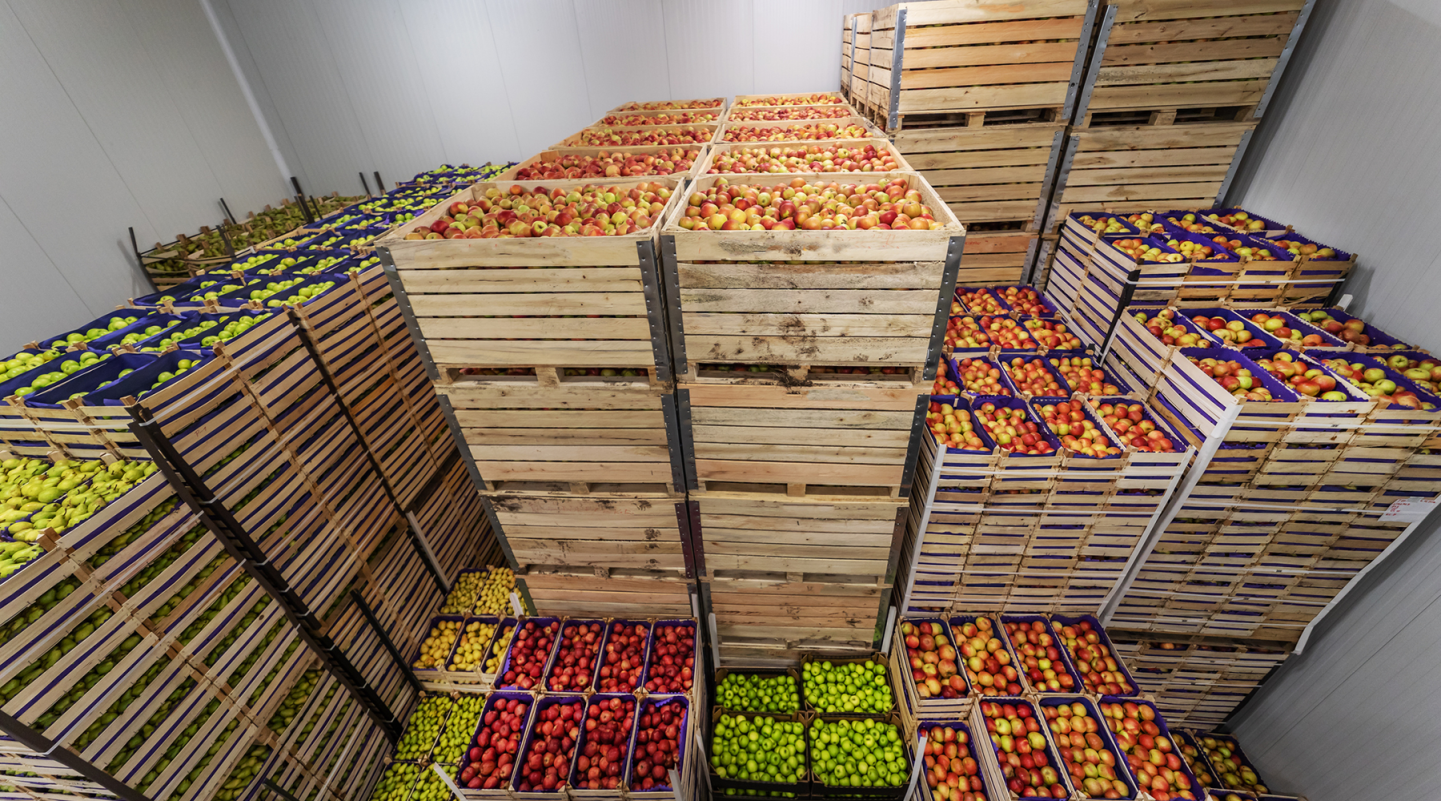
Title III: Trade
Five-Year Funding Level: $2.04 billion
The Trade title provides support for U.S. agricultural exports and international food assistance programs, both emergency and non-emergency. Other provisions in this title address program changes related to World Trade Organization obligations.
Programs of Interest
The 2018 Farm Bill authorized a series of USDA Export Market Development Programs aimed at creating and expanding opportunities for U.S. agricultural products in international markets.
Programs important to counties and our residents include:
HOW TO ACCESS: Counties are eligible to submit proposals through the Unified Export Strategy process during open application periods. Annually, FAS announces these openings for EMP and TASC, both of which are administered by the USDA-FAS. |
- Agricultural Trade Promotion (ATP) Program: Assists agricultural producers and agribusinesses identify and access new markets for their products through cost-share agreements with eligible entities; ATP and its constituent programs are administered by the USDA Foreign Agricultural Service. Programs under the umbrella of the ATP include:
- Emerging Markets Program: Provides funding for technical assistance to support agricultural exports via cost-share agreements
- Technical Assistance for Specialty Crops: Provides funding for technical assistance initiatives that assist U.S. agricultural producers overcome sector-wide challenges that threaten specialty crop exports
NACo POLICY: Counties believe that the competitive position of U.S. agriculture in world markets would be enhanced by the removal of certain barriers to trade in some foreign markets and by the termination of subsidies by foreign competitors. Counties support legislation that provides for uniformity in product grade, quality and inspections standards for all imports and exports.

Title IV: Nutrition
Five-Year Funding Level: $326.02 billion
The Nutrition title provides nutrition assistance and food distribution programs for low-income county residents in rural, suburban and urban areas, traditionally accounting for roughly 75 percent of the Farm Bill’s funding.
Programs of Interest
- The Supplemental Nutrition Assistance Program (SNAP) provides nearly 40 million low-income individuals with monthly grocery benefits, functioning as a key support for vulnerable county residents.
- SNAP, the largest federal nutrition program, is a foundational part of the social safety net and has a significant impact on mitigating hunger and poverty in low-income households. Beyond helping struggling families put food on the table, SNAP stimulates local economies during downturns, feeds people during natural disasters, offers nutrition education and provides certain participants with Employment and Training services.
- In ten states – Calif., Colo., Minn., N.J., N.Y., N.C., N.D., Ohio, Va. and Wis. – representing 32 percent of total program participants, counties are responsible for administering SNAP. Counties operating SNAP often contribute significant levels of local funds to meet the administrative and supplemental costs of running the program.
- County federal policy priorities for SNAP include:
- Preserving the current SNAP entitlement and funding structure: Maintain the current SNAP entitlement program and funding structure, including the 50 percent federal administrative match
- Streamlining SNAP administratively and across benefits programs: Continue federal administrative actions that provide flexibilities in administering federal health human services and nutrition benefit programs after the COVID-19 Public Health Emergency ends; develop technology that makes the program more seamless for administrating entities; and simplify administration and application processes to allow individuals reapplying for benefits to enter a streamlined process
- Creating greater flexibility in SNAP work requirements: Ensure counties and states can meet the individual needs of their caseloads and more effectively support individuals in accessing sustainable employment
- Ensuring benefit adequacy: Establish a more gradual phase-out from the SNAP program to ease the transition from benefits to income, especially for families
- Developing real solutions for rural communities: Address specific obstacles rural communities face in ensuring access to food and healthy eating habits in rural areas, where healthy food options may be limited. Afford states with large rural populations and rural counties additional flexibility in SNAP administration
- Improving healthy food access: Promote healthy diets, including strengthening incentives and infrastructure to encourage more fruit and vegetable production. Invest in programs promoting healthy food and expand programs that help communities invest in retail markets and food-based businesses, and increasing access to farmers’ markets
- Providing greater funding certainty: Provide SNAP with “such sums as necessary” to ensure the program can sustain any unexpected surges in demand
- Remove programmatic barriers for members of the military: Though service members and their families often experience high rates of food insecurity, they face barriers to accessing SNAP due to program eligibility requirements that count the Military Basic Allowance for Housing (BAH) as income. The BAH is non-taxable compensation service members receive that is intended to offset the cost of housing when they do not live in government-provided housing. The federal government should exclude the BAH, or percentages thereof, from income when determining eligibility for the SNAP to ensure access for those in the armed forces.
HOW TO ACCESS: County residents seeking SNAP support can apply directly through the state agency in respective states of residence. |
View additional NACo resources on SNAP, including the Legislative Toolkit For Counties: Priorities for Strengthening SNAP and the SNAP Policy Brief.
NACo POLICY: The SNAP program provides nutrition assistance funding to low-income families and individuals to support better support healthy and adequate eating habits. The program serves diverse populations with a wide range of needs and is administered by counties in a variety of states across the country. Counties support moving a SNAP reauthorization in conjunction with a reauthorization of the Farm Bill. NACo has extensive SNAP policies that can be found here.
HOW TO ACCESS: Administered through the USDA Food and Nutrition Service, this program distributes U.S.-grown foods to states who subsequently provide selected local agencies with the food to serve residents. |
- The Emergency Food Assistance Program (TEFAP) is a federal program that distributes foods to state agencies who in turn provide the goods to local food banks and other community institutions that directly serve the public.
NACo POLICY: As the front line of the social safety net, counties support increased funding for TEFAP and other federal programs that help vulnerable residents access emergency food.
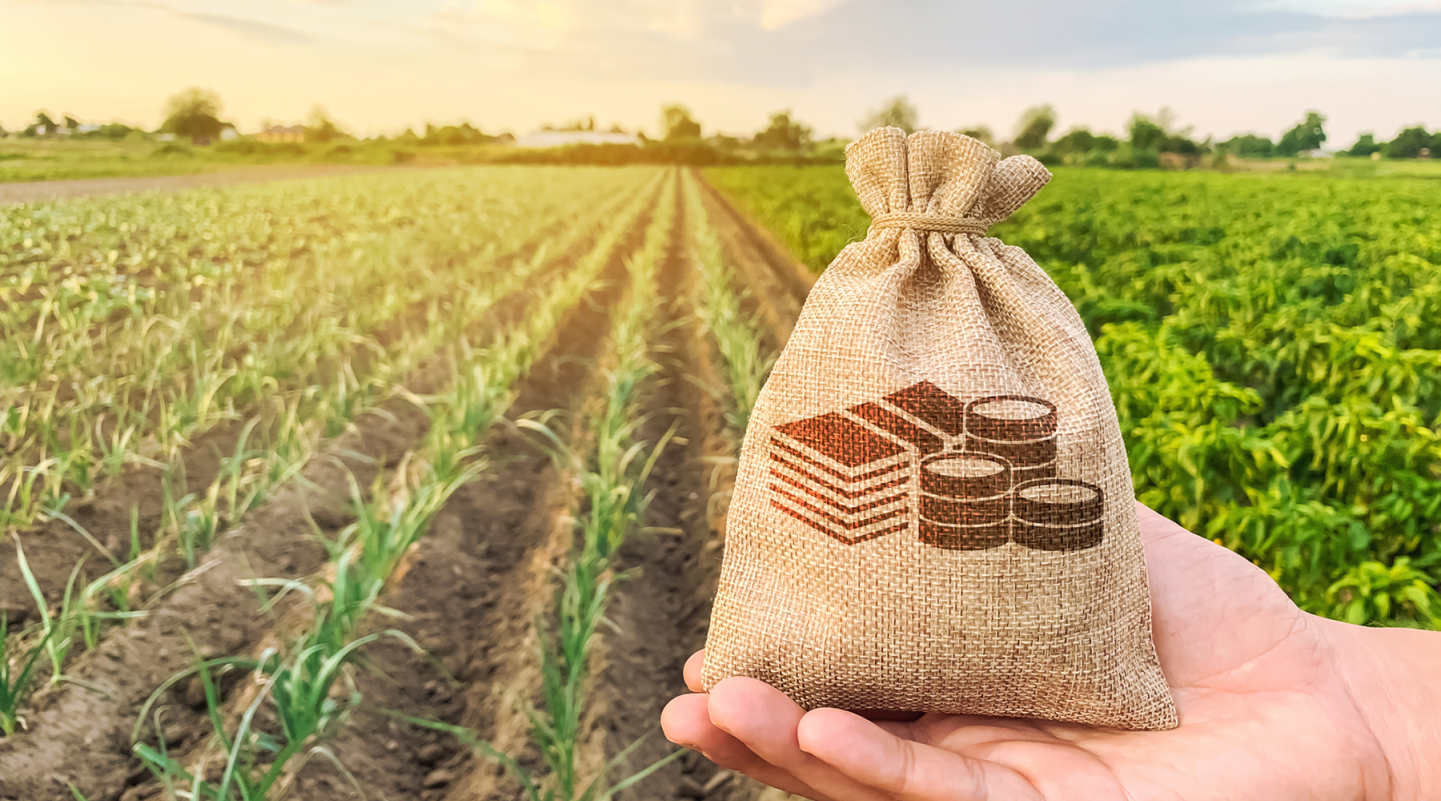
Title V: Credit
Five-Year Funding Level: $2.20 billion over 5 years*
*Negative funding level for is the result of changes to eligibility and total credit offered through Title V programs
The Credit title offers direct government loans to agricultural producers, guarantees loans from commercial lenders, and sets eligibility rules and policies. These programs provide crucial lifelines to county economies dependent on agriculture, as well as support for beginning and disadvantaged producers.
Programs of Interest
HOW TO ACCESS: Farmers and ranchers interested in farm loans through the FSA should use the USDA’s Loan Assistance Tool to get started, or contact respective local USDA-FSA offices. |
- Conservation Loan Program: Provides access to credit for farmers who need and want to implement conservation measures on their land but do not have the access to funding necessary to implement these practices on their own
- Farm Ownership and Operating Loans Program: Offers direct loans and guarantees private loans to farmers and ranchers (while the Farm Bill does not authorize these programs, it sets the eligibility rules and policies that govern how the programs operate)
- Emergency Farm Loans Program: Provides rapid access to credit for farmers and ranchers recovering from the impact of natural disasters once the USDA Secretary designates a natural disaster or the President declares a state of emergency
HOW TO ACCESS: Qualifying producers, including all farmers and ranchers within counties located in a disaster area and in counties contiguous to the disaster area, can apply for these loan programs through local USDA-FSA offices. |
NACo POLICY: Counties support continuation of the enhanced federal tax deduction for donations of conservation and trail easements to facilitate their use by counties, special districts and other units of local government as a land planning, conservation and management tool.

Title VI: Rural Development
Five-Year Funding Level: $432 million over 5 years*
*Negative funding level is the result of a change to the “cushion of credit” provision for rural electric utilities
The Rural Development title supports rural business and community development and addresses a wide range of policy issues concerning rural America, including equity capital development in rural areas, regional economic planning and development, essential community facilities, water and wastewater infrastructure needs, value-added agricultural development and broadband deployment.
Programs of Interest
The USDA-RUS houses several broadband assistance programs to fund and finance broadband deployment traditionally funded by the Farm Bill.
Programs important to counties and our residents include:
HOW TO ACCESS: Administered by the USDA-RUS, counties are eligible to apply directly to USDA-RUS for these competitive grant and financing opportunities when they are open. |
- Rural Broadband Loans, Loan/Grant Combinations, and Loan Guarantees: Provides loans and loan guarantees to fund costs of construction, improvement or acquisition of facilities and equipment needed to provide service at the broadband lending speed in eligible rural areas
- ReConnect Loan and Grant Program: Provides grants and loans for the construction, improvement or acquisition of facilities and equipment needed to provide broadband service in eligible rural areas
NACo POLICY: Given a relative lack of incentive for service providers to seek loan financing over grant funding, Congress has increasingly shifted appropriations to the pilot ReConnect Program through the annual appropriations process. Counties support consideration of the existing Farm Bill Broadband Programs receiving appropriations for its grant component while considering a long-term authorization of the ReConnect Program’s current grant, grant/loan combination, and loan funding opportunities.
HOW TO ACCESS: Counties are eligible to apply directly through USDA-RUS for these funding and financing opportunities during open application periods, with the exception of Telecommunications Infrastructure Loans, which accept applications year-round (find your General Field Representative to get started). |
- Community Connect Grant Program: Provides funding for broadband service on a “community-oriented connectivity” basis to foster economic growth and deliver enhanced educational, health care, and public safety benefits
- Telecommunications Infrastructure Loan and Loan Guarantee Program: Funds the deployment, expansion, and improvements of both broadband and telephone infrastructure networks in rural areas
- Distance Learning and Telemedicine Program: Helps rural communities use the unique capabilities of telecommunications to connect to each other and to the world, overcoming the effects of remoteness and low population density
- Middle Mile Infrastructure Program: Provides grants to assist eligible entities establish the “middle mile”, the physical infrastructure which interconnects communities
- This program did not receive appropriations over the five years of the 2018 Farm Bill. A similar program, Enabling Middle Mile Infrastructure Grants, was created in the 2021 Bipartisan Infrastructure Law, though the demand for the program exceeded available funding by roughly five times. Additionally, it was only funded in FY 2022.
NACo POLICY: Counties support congressional and administrative action that provides long-term funding support for the universal deployment and adoption of high-speed broadband services in rural America.
Rural Business
The Farm Bill authorizes a series of programs intended to catalyze economic development and business creation in rural communities. Through these programs, USDA makes grants and provides TA to entrepreneurs, social service providers and established businesses that can spur economic growth in underserved rural areas.
Programs important to counties and our residents include:
HOW TO ACCESS: Counties are eligible as “public bodies” who partner with other eligible entities in rural jobs accelerator partnerships to apply directly to the USDA Office of Rural Development during open application periods. |
- Rural Innovation Stronger Economy Program: Provides competitive grants to counties and other eligible entities to establish job accelerators to assist new businesses and create high-wage jobs in underserved rural areas
HOW TO ACCESS: Rural counties are eligible as rural public entities, as are rural electric cooperatives, to apply through USDA RD’s local or state offices. To get started, contact your local office for key deadlines. |
- Rural Economic Development Loan and Grant Program: Provides zero-interest loans to local utilities that pass on funding to local businesses for projects that will create and retain employment in rural areas with a population of less than 50,000
- Rural Business Development Grants Program: Supports targeted technical assistance, training and other activities leading to the development or expansion of small and emerging private businesses in rural areas which will employ 50 or fewer new employees and have fewer than $1 million in gross revenue.
NACo POLICY: Counties urge Congress to provide increased funding for local capacity and technical assistance. Counties also support improved coordination of the USDA’s economic development programs at the state, regional and local levels. Federal agencies should be required to recognize and follow county and regional development plans developed by local and elected officials.
Title VI authorizes several rural water infrastructure programs that assist rural communities with critical construction and maintenance needs for local water and wastewater facilities.
Programs important to counties and our residents include:
HOW TO ACCESS: County officials interested in participating in the above programs can apply should contact your local RD office, National Rural Water Association State Association, or the Rural Community Assistance Partnership for details on assistance. |
- Rural Water and Wastewater Circuit Rider Program: Provides technical assistance to rural water systems experiencing day-to-day operational, financial or managerial issues
- Rural Water, Waste Disposal and Wastewater Facilities Grants Program: Provides rural communities with funding and financing for critical water infrastructure and access to clean, affordable water sources
- Rural Water and Waste Disposal Loan and Grant Programs: Provides funding for clean and reliable drinking water systems, sanitary sewage disposal, sanitary solid waste disposal and storm water drainage to households and businesses in eligible rural areas
- Emergency and Imminent Community Water Assistance Program: Assists communities prepare or recover from an emergency that threatens the availability of safe drinking water
- Solid Waste Management Grants program: Provides funding for organizations that provide technical assistance or training to improve the planning and management of solid waste sites
HOW TO ACCESS: County officials interested in participating in the above programs can apply through RDApply. |
NACo POLICY: Critical infrastructure, such as water and wastewater, remain a priority for many rural communities. The cost of building, maintaining, and upgrading local water systems is a challenge for many small towns and rural counties. Beyond the public health interests, clean and reliable water is a necessity to spur economic growth. Counties urge lawmakers to create or expand flexible cooperative or collaborative funding opportunities.

Title VII: Research, Extension and Related Matters
Five-Year Funding Level: $694 million
This title offers numerous agricultural research and extension programs that help farmers and ranchers become more efficient, innovative and productive.
Programs of Interest
Agricultural Education, Research and Support Programs administered through USDA’s National Institute of Food and Agriculture seek to improve the knowledge base of producers and consumers on best practices for agriculture and nutrition.
Programs important to counties and our residents include:
- Nutrition Education Programs: Enables low-income individuals and families through a series of initiatives to engage in nutritionally sound food purchase and preparation practices
- Food Safety Outreach Program: Provides grants for community outreach projects, collaborative education and training projects and TA to promote food safety standards, guidance and protocols at the local level
HOW TO ACCESS: Get started by accessing NIFA’s grant application portal. |
NACo POLICY: Counties support the promotion of healthy diets, including strengthening incentives and infrastructure to encourage more fruit and vegetable production. Counties also support farm-to-school programs that bring fresh, locally grown food into school lunch programs.
- Extension Service: Supports land-grant institutions in offering resources to address public needs, including educating farmers on business operations, modern agricultural science and technologies
- County-based extension services provide agricultural producers with technical assistance to help their operations thrive and connects both county officials and residents with federal programs that meets community needs
HOW TO ACCESS: University faculty translate science-based research results into discernible language for county-based educators who work with local citizens and interest groups to solve problems, evaluate the effectiveness of learning tools, and collect grassroots input to prioritize future research. |
NACo POLICY: Counties call upon the Extension Service to ensure that services adapt regularly to the needs of counties and create a formal process to ensure that counties play a partnership role in selecting extension staff and the topical focus of local agents. Counties support the mission of the USDA and encourage it to focus on expanding the competitiveness of American agriculture and supporting rural businesses and industries that enhance rural development and quality of life in rural communities.
- Beginning Farmer and Rancher Development Program: Provides competitive grants to organizations for education, mentoring and technical assistance initiatives for beginning farmers or ranchers
HOW TO ACCESS: BFRDP program recipients must be a collaborative state, tribal, local, or regionally based network or public-private partnership. This group can apply directly to USDA-NIFA during open application periods. |
NACo POLICY: Counties support the Beginning Farmer Loan Program. Counties also support incentives, such as low-interest loans and tax credits, to be provided to young people entering farming and agribusiness in rural areas.

Title VIII: Forestry
Five-Year Funding Level: $5 million
The Forestry title supports forest management projects administered by the USDA-USFS.
Programs of Interest
- Landscape Scale Restoration Program: Provides competitive grants large-scale forest restoration projects that utilize existing federal land management authorities to in engage in restoration activities across jurisdictions, allowing for more effective implementation of land management practices
HOW TO ACCESS: Eligible counties can access these programs through USFS representatives directly or work with state forestry agencies. While Counties are eligible to participate in the program, the most common role is as a member of a forest collaborative. |
Policies of Interest
- The 2018 Farm Bill expanded the Good Neighbor Authority (GNA), which allows the U.S. Forest Service to enter into agreements with state and local land management agencies to engage in joint forest management. The 2018 Farm Bill expanded GNA to federally recognized tribes, allowing for the use of GNA agreements on tribal land.
- Federal Stewardship Contracting authorities are also authorized in the Farm Bill. Stewardship contracts allow the USFS and the DOI-BLM to contract with state land agencies to promote more effective management of federal forests and rangeland.
NACo POLICY: Counties support expanding Good Neighbor Authority (GNA) to allow counties to enter into GNA partnerships with the U.S. Forest Service. Counties should be allowed to retain the receipts and reinvest them into other GNA forest management projects on non-federal lands, as states and tribes can do.
Counties support the sharing of federal leasing and rights-of-way revenues from federal stewardship contracts on federal lands with county governments where those developments and contracts occur. Any revenue sharing program should not negatively impact the Payment in Lieu of Taxes (PILT) programs.

Title IX: Energy
Five-Year Funding Level: $471 million
The Energy title encourages the development of farm and community renewable energy systems through grants, loan guarantees and other programs. Provisions within the title cover production, processing and marketing of biofuels and biofuel feedstocks, as well as research, education and demonstration programs.
Programs of Interest
Biofuels and Biomass Programs
HOW TO ACCESS: Eligible lenders can request a loan guarantee through the USDA Office of Rural Development on behalf of state and local governments and other eligible entities. |
- Biorefinery, Renewable Chemical, and Bio-based Product Manufacturing Assistance Program: Assists the development, construction and retrofitting of new and emerging technologies for advanced biofuels, renewable chemicals and bio-based products by providing loan guarantees up to $250 million
HOW TO ACCESS: Any entity that produces and sells biofuel is eligible to apply during annual application periods that begin Oct. 1 and end Oct. 31. |
- Advanced Biofuel Payment Program: Supports and ensures expanding production of advanced biofuels by providing quarterly payments to eligible advanced biofuel producers
HOW TO ACCESS: Administered through the USDA-FSA, the program allows eligible producers within a designated BCAP project area to enroll land into the program at the local USDA Service Center corresponding to the location where the enrolled acres are located during open application periods. |
- The Biomass Crop Assistance Program (BCAP): Provides financial assistance to owners and operators of agricultural and nonindustrial private forest land who wish to establish, produce and deliver biomass feedstocks through matching payments or contracting agreements with the Commodity Credit Corporation
NACo POLICY: Biomass fuels are paramount not only to the reduction of pollution in counties throughout the nation, but also serve as revenue generators for farmers that are struggling with low prices for their crops and increased costs of production. Counties urge Congress to encourage and enhance the use of biomass fuels, including woody biomass energy sources.
Further, counties support comprehensive legislation to encourage and enable American agriculture to provide at least 25 percent of the total energy, including wind and solar, consumed in the United States by 2025 while continuing to produce abundant, safe and affordable food and fiber.
Rural Energy
HOW TO ACCESS: Counties are directly eligible to apply for these competitive grant funds through USDA-RD year-round through local USDA-RD offices. |
- Rural Energy for America Program: Provides financial assistance to agricultural producers and rural small businesses to improve energy efficiency in non-residential buildings and facilities, incorporate renewable technologies that reduce energy consumption and participate in energy audits and renewable energy development assistance
NACo POLICY: Counties support increased federal resources for researching and developing renewable energy technologies. Counties are also supportive of tax incentives to increase usage and reliance on renewable energy sources but oppose mandates that will result in undue fiscal hardship to rural agricultural users.
Finally, counties support increased and multifaceted federal efforts to increase renewable energy sources and consumption, as well as federal legislation and policies that enable funding mechanisms, including grant programs, for Community Renewable Energy Projects.
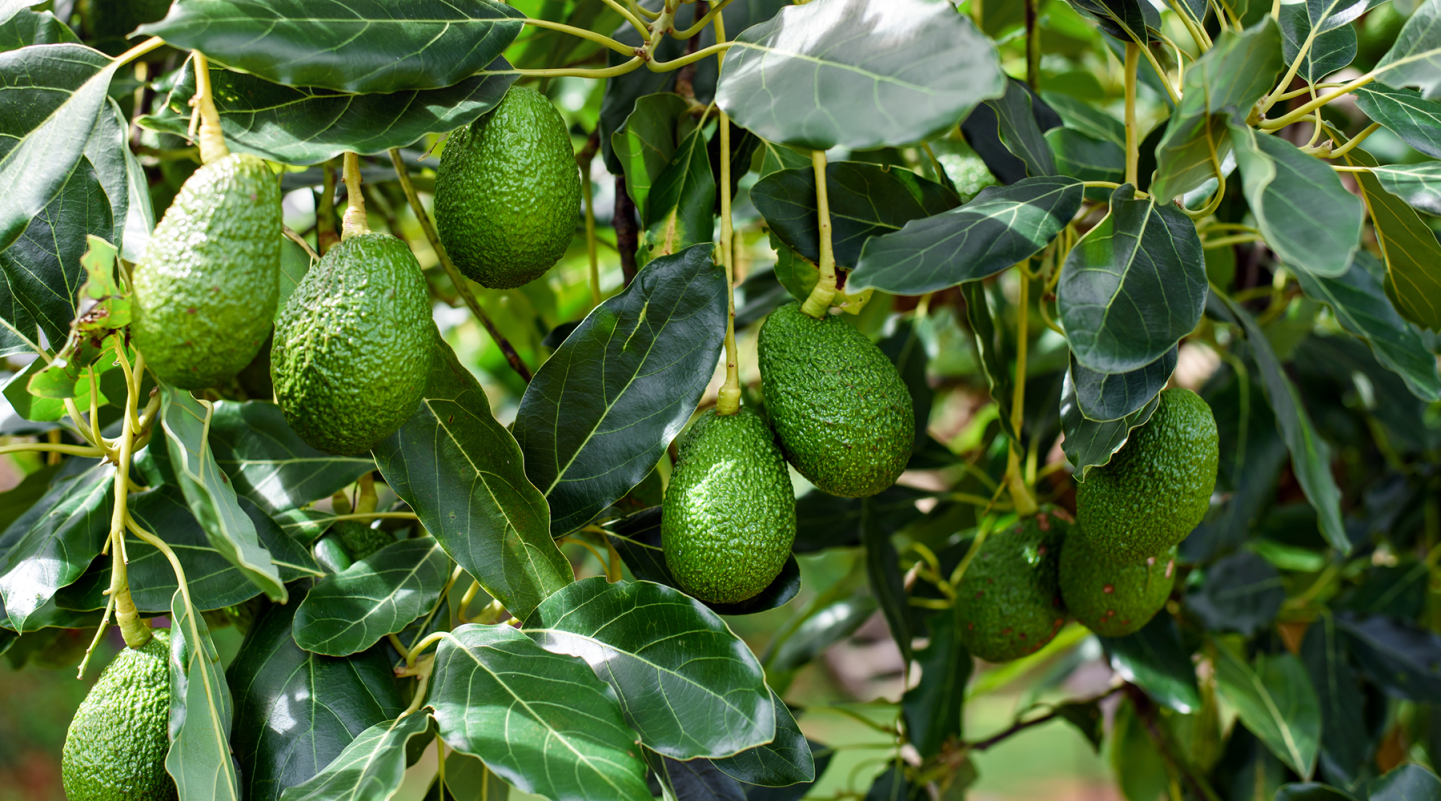
Title X: Horticulture
Five-Year Funding Level: $1.02 billion
The Horticulture title supports producers cultivating specialty crops through various initiatives such as market promotion, agricultural disease prevention and public research. The title also includes provisions supporting organic agricultural production.
Programs of Interest
The 2018 Fam Bill expanded USDA programs that support Specialty Crops and Organic Agriculture – such as fruits, vegetables, nuts, and nursery crops. Title X expanded and clarified USDA’s process for issuing organic certifications and improved the resources available for farmers and ranchers seeking to obtain organic certifications for their products.
Programs important to counties and our residents include:
HOW TO ACCESS: Producers of specialty crops can apply as subrecipients to state departments of agriculture, the only direct program recipients, to access funding. To learn more about how to access SCBGP funding in your state, contact your SCBGP state department of agriculture contact. |
- Specialty Crop Block Grants Program (SCBGP): Provides competitive grant funding to state agricultural agencies to fund initiatives supporting specialty crop growers in their jurisdictions
The 2018 Farm Bill reauthorized and expanded programs promoting new market opportunities for Local and Urban Food Production.
Programs important to counties and our residents include:
HOW TO ACCESS: Administered by the USDA-AMS, counties are directly eligible to apply for the first three programs during open application periods. To get started, view the LAMP stakeholder toolkit. |
- Local Agriculture Market Program (LAMP)Assists counties in increasing access to locally and regionally produced agricultural products and developing new market opportunities for farm and ranch operations in local areas through four programs:
- Farmers Market Promotion Program
- Local Food Promotion Program
- Regional Food System Partnerships Program
- Value-Added Producer Grants Program
HOW TO ACCESS: Administered by the USDA-RBCS, producers are eligible to apply directly for this program during open application periods. |
- Value-Added Producer Grant Program: Provides grants to agricultural producers wishing to undertake projects that add value to their commodities, create or expand market opportunities, and increase producer income
NACo POLICY: Counties support local food producers that sell direct to consumers and call on USDA and FDA to continue providing outreach and technical assistance to these producers to ensure that they are implementing best practices in food safety.
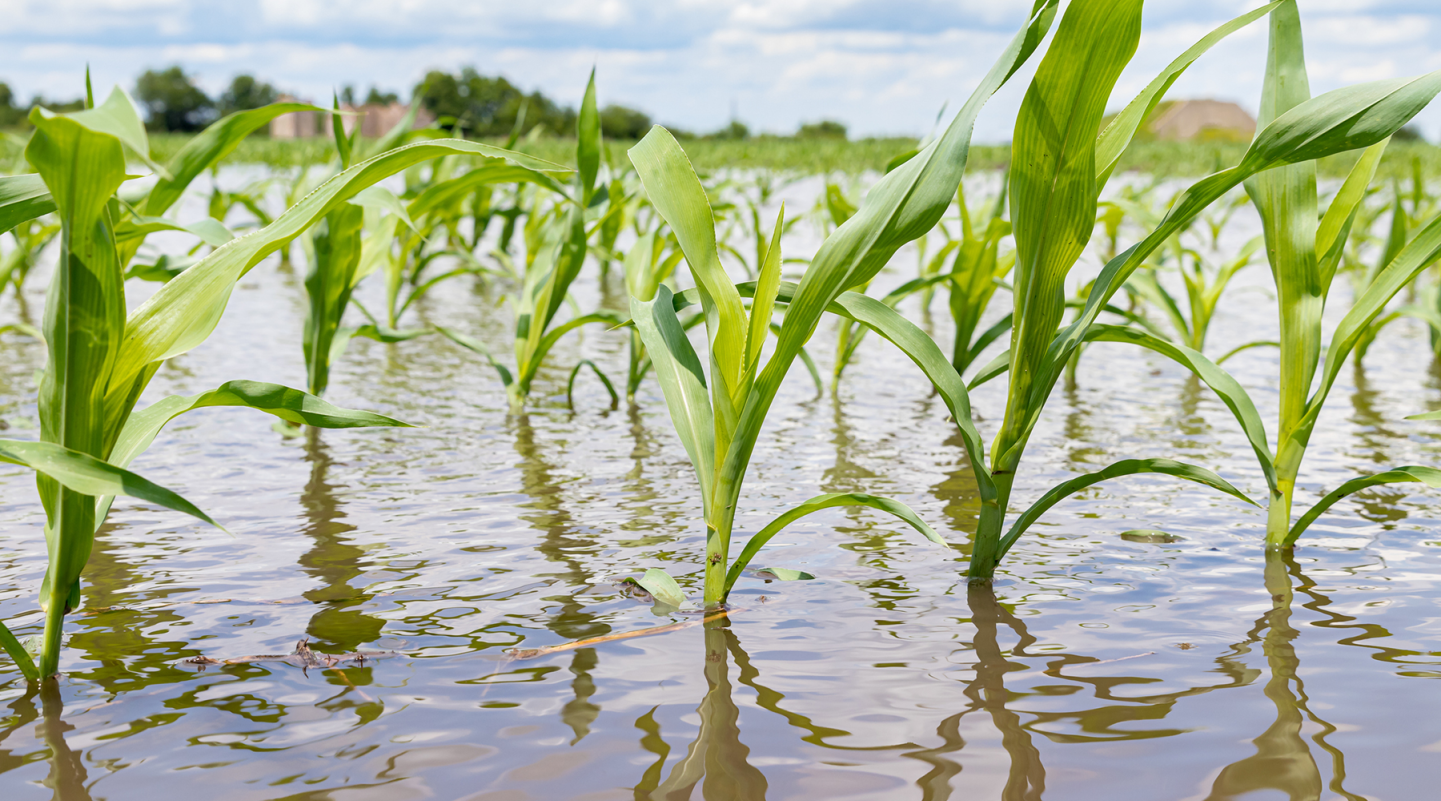
Title XI: Crop Insurance
Five-Year Funding Level: $38.01 billion
The Crop Insurance title enhances the permanently authorized federal crop insurance program. Crop insurance works like any other insurance: a farmer and provider enter into a contract that can be canceled or annually renewed. These contracts are made on a crop-by-crop, county-by-county basis. The farmers are insured against losses with deductibles that could be due to market price, adverse weather or other unavoidable perils.
Programs of Interest
HOW TO ACCESS: Administered through benefits.gov, any agricultural farmers or ranchers may apply for crop insurance. For a listing of insurance companies offering crop insurance coverage, visit the RMA Agent Locator. |
- Federal Crop Insurance Program (FCIP) Provides farmers with affordable insurance coverage, including subsidized premiums, against financial losses from weather-related damages and downturns in the agricultural market
- While the FCIP is permanently authorized, the Federal Crop Insurance Corporation, which administers and finances the program, is funded with mandatory appropriations through the Farm Bill. Lawmakers also make changes to the FCIP, including the extent and type of coverage provided, in amendments to the Farm Bill.
NACo POLICY: Counties support expanding the crop insurance program to cover additional crops, livestock and poultry. Additionally, counties encourage Congress to provide a subsidy for hay production to assist agricultural communities, prevent soil erosion and improve water quality.
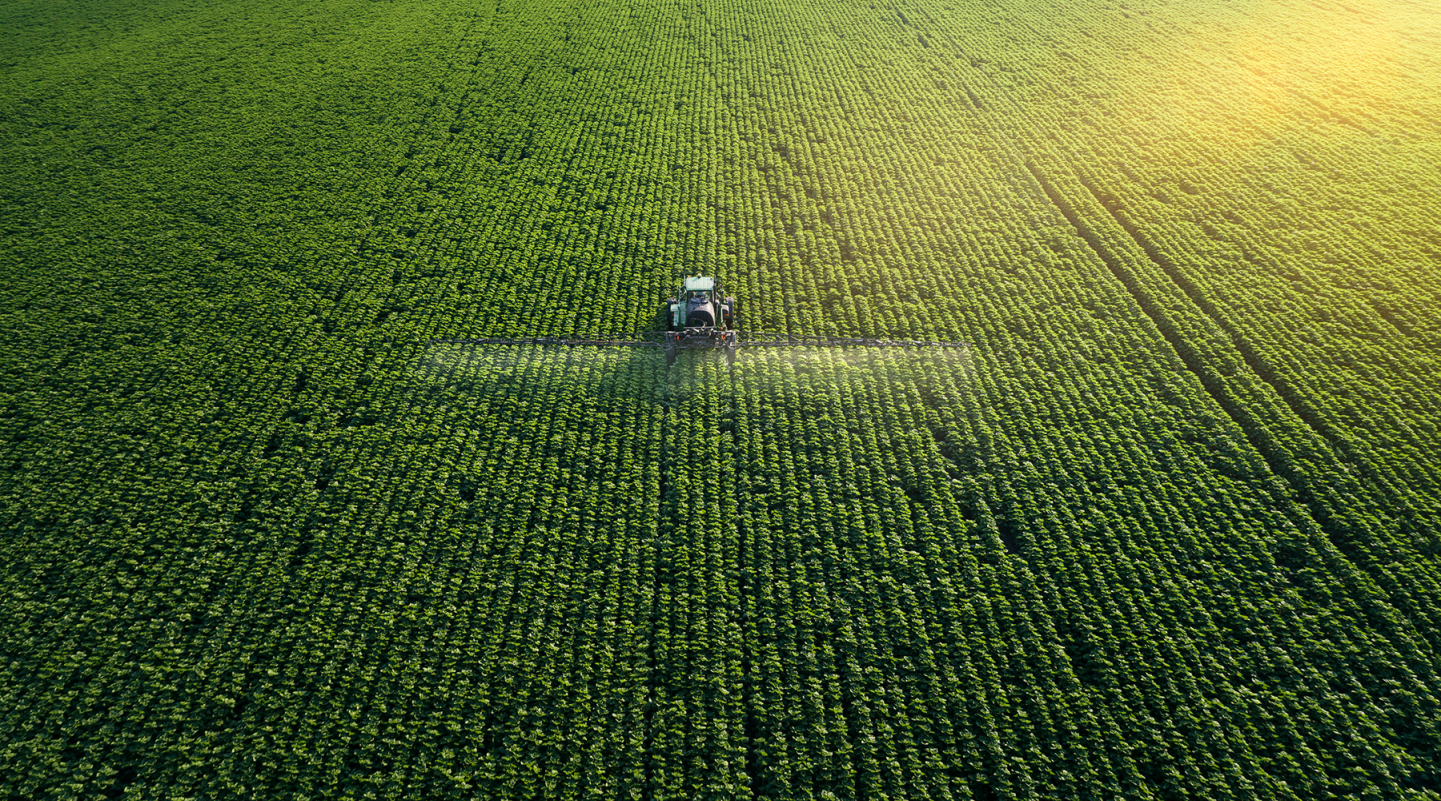
Title XII: Miscellaneous
Five-Year Funding Level: $1.94 billion
This title covers a wide range of programs, such as livestock and poultry production, food security, and support for limited-resource and socially disadvantaged farmers.
Programs of Interest
HOW TO ACCESS: Community-based nonprofits, tribes, land-grant institutions and Alaska Native Corporations are eligible to apply for support under the 2501 program during open application periods through the USDA-Office of Partnerships and Public Engagement. For information on how to access the BFRDP, jump to the program information in this report. |
- Farming Opportunities Training and Outreach Program: Assists socially disadvantaged and veteran farmers and ranchers and beginning farmers and ranchers in the ownership and operation of farms and ranches through education and training and promotes equitable participation USDA programs
- Combines the Beginning Farmer and Rancher Development Program (BFRDP) and the Outreach and Assistance to Socially Disadvantaged and Veteran Farmers and Ranchers Program (2501 Program)

